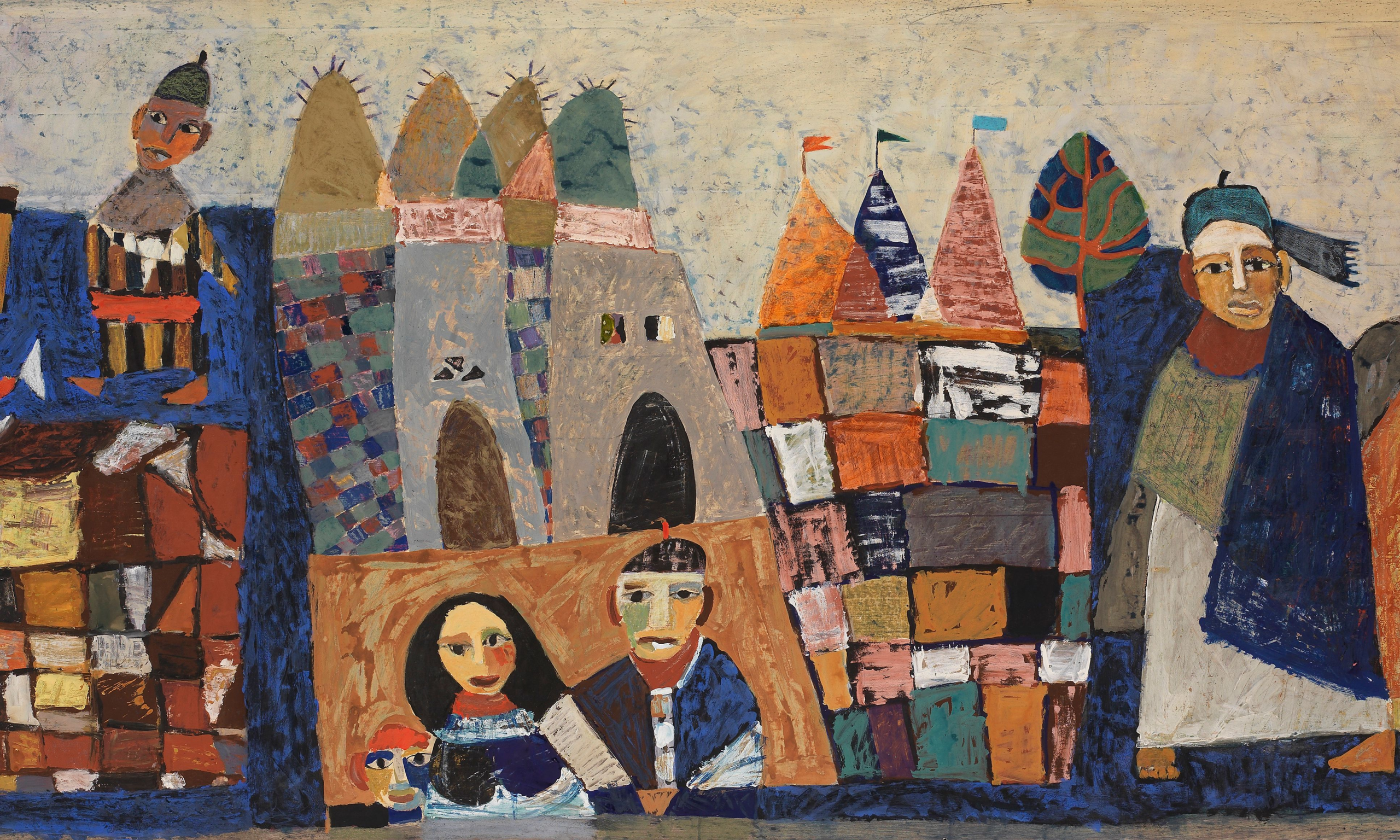Hamed Abdalla, Conscience du Sol (1956)
Collection Dar Abdalla
© Abdalla Estate, Paris
How did Modern Arab art develop? How did Arab artists contribute to the art scene in Paris? And how did Paris inspire these artists? These are some of the questions explored in a major new exhibition at the Musée d'Art Moderne de Paris next year.
Arab presence: Modern Art and Decolonisation, Paris 1908-1988 (5 April 2024-25 August 2024) will take a comprehensive, scholarly look at the influx of Arab artists to Paris during the 20th century, as France slowly withdrew from its colonies in the Middle East and North Africa, and the creative relationships that developed during that period.
More than 200 works by almost 130 artists—most of which have never been exhibited in France—include paintings, sculptures and photographs alongside historical sound and audiovisual archives.
“Paris has often been described as an Arab capital,” says Morad Montazami, the co-curator of the exhibition. “In the 20th century, it was a meeting point for Arabs and a place of shelter for many. There were many artistic encounters and exchanges through art schools, exhibitions and art salons.”
The show, which has been three years in the making, aims to bring attention to a lesser known, and non-Western, part of Modern art history as well as to underrepresented artists from the region. These include Mahmoud Saïd, Amy Nimr, Fatma Arargi and Jaber El Mahjoub alongside more internationally known artists such as Marwan Kassab Bachi, Huguette Caland and Saloua Raouda Choucair.
As well as the Musée d'Art Moderne de Paris’s own works, loans are coming from French public collections such as the Institut du Monde Arabe and the Musée du Quai Branly-Jacques Chirac as well as key collections in the Middle East, including Mathaf in Doha (Qatar); Barjeel Art Foundation in Sharjah (United Arab Emirates); the Ibrahimi Collection in Amman (Jordan); and the Cairo Museum of Modern Art (Egypt). Many works are also coming from private collections and artists’ families and estates. A catalogue of essays, research and previously unpublished archive materials will accompany the exhibition.
The show will be chronological and split into four sections: Nahda (1908-37), Farewell to Orientalism (1937-56), Decolonisations (1956-67), and Art and Struggles (1967-88). Nahda, which means “awakening” in Arabic, refers to a period of Arab cultural enlightenment; this chapter of the exhibition will look at Western influence on Arab art through fine art schools, particularly in Egypt, Lebanon and Algeria, and the large colonial exhibitions in Paris, including the most important, The Colonial Exhibition of 1931.
The Art and Struggles section will show how artists dealt with political challenges and international conflicts, such as the Vietnam War and the Palestinian cause, in their work. Such works will have great resonance given Israel’s current offensive in Palestine.
It will also include the great poetic text The Arab Apocalypse (1980) by the late Lebanese artist Etel Adnan, which she wrote at the outset of the Lebanese Civil War and reflects on the tumult of the Arab world. The exhibition will include an audio installation of Adnan’s poetry, recited in different languages.
The show concludes with a presentation of Arab immigration to France over the years and includes Seismography of Struggles, a research project initiated by Zahia Rahmani that explores non-European critical and cultural journals as tools of resistance in anti-colonial and liberatory movements.
Arab presence comes at a time when racism and Islamophobia are on the rise again in France. “This show is making a statement,” Montazami says. “It has a pedagogic role and encourages us to look at our shared history. There is no way that you can deny or undermine them.”

